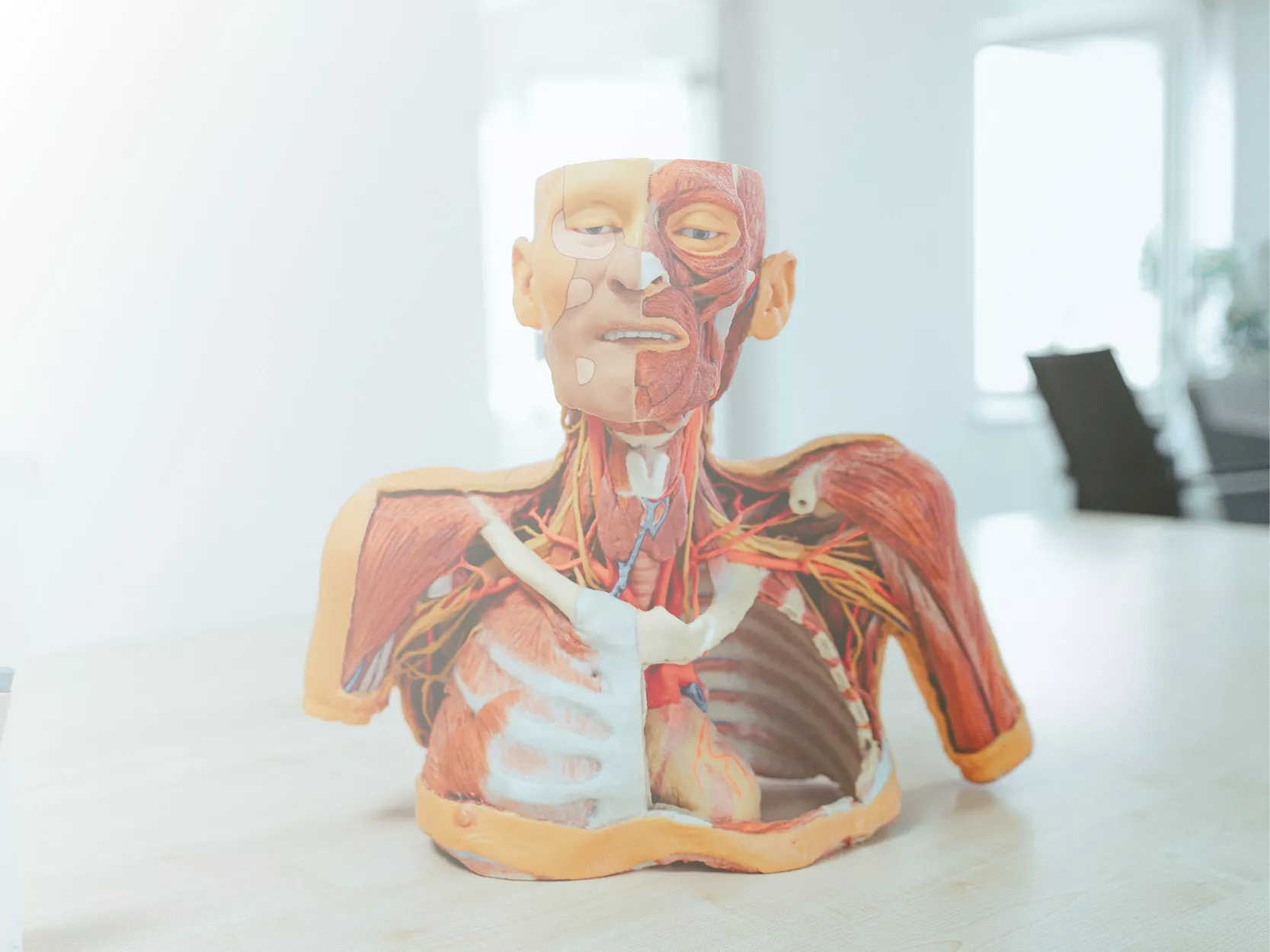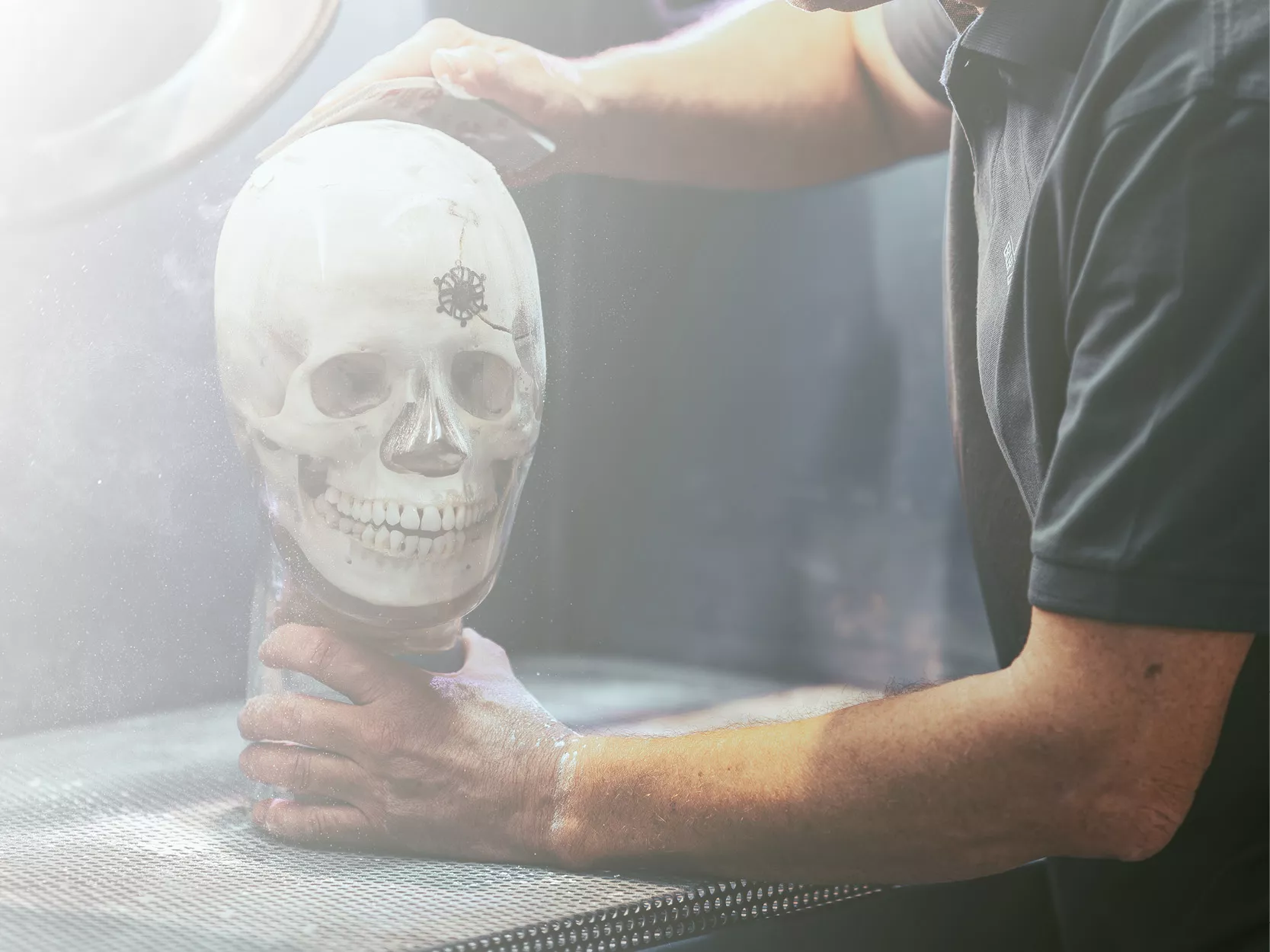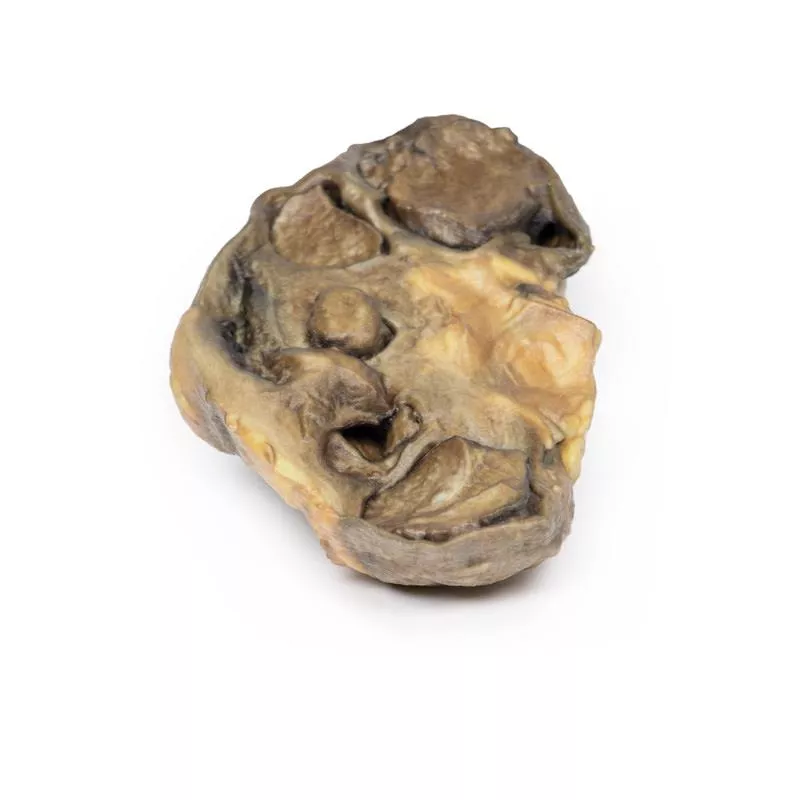Produktinformationen "Multiple Renal Calculi"
Klinische Vorgeschichte
Ein 68-jähriger Mann stellte sich mit Fieber, Schüttelfrost sowie einer 6-monatigen Vorgeschichte von intermittierenden beidseitigen Flankenschmerzen und Hämaturie vor. Die Laborwerte zeigten eine eingeschränkte Nierenfunktion bei normalem Serumkalzium. Die CT zeigte beidseitige Hydronephrose, mehrere Nierensteine sowie peri- und subphrenische Abszesse. Der Patient verstarb an fortschreitendem Nierenversagen.
Pathologie
Das halbierte Nierenpräparat zeigt eine starke Erweiterung des Pelvi-Kalyx-Systems und eine ausgeprägte Nierenatrophie, teils nur als dünner Rand sichtbar. Im Nierenbecken liegt ein großer braun-weißer Stein, kleinere Steine befinden sich in den Kelchen, einer verlegt den Ureter mit proximaler Erweiterung.
Weitere Informationen
Urolithiasis (Nierensteine) betrifft bis zu 10 % der Bevölkerung, meist in der Niere. Risikofaktoren sind männliches Geschlecht, Veränderungen der Harnzusammensetzung (Hyperkalziurie, Hyperoxalurie), Stoffwechselerkrankungen (Zystinurie, Gicht), Ernährung und Umwelt. Symptome reichen von starken kolikartigen Schmerzen und Hämaturie bis zu asymptomatischen Verläufen, wenn die Steine im Becken oder in der Blase bleiben.
Vier Haupttypen von Steinen:
- Kalziumsteine (70 %), hauptsächlich Kalziumoxalat/-phosphat, häufig durch Hyperkalziurie oder Hyperoxalurie verursacht.
- Struvitsteine (5–10 %), Magnesium-Ammonium-Phosphat, häufig infektionsbedingt, bilden große „Geweih“-Steine.
- Harnsäuresteine (5–10 %), bei Hyperurikämie (Gicht, Leukämie).
- Zystinsteine, durch gestörte Aminosäurerückresorption.
Ein 68-jähriger Mann stellte sich mit Fieber, Schüttelfrost sowie einer 6-monatigen Vorgeschichte von intermittierenden beidseitigen Flankenschmerzen und Hämaturie vor. Die Laborwerte zeigten eine eingeschränkte Nierenfunktion bei normalem Serumkalzium. Die CT zeigte beidseitige Hydronephrose, mehrere Nierensteine sowie peri- und subphrenische Abszesse. Der Patient verstarb an fortschreitendem Nierenversagen.
Pathologie
Das halbierte Nierenpräparat zeigt eine starke Erweiterung des Pelvi-Kalyx-Systems und eine ausgeprägte Nierenatrophie, teils nur als dünner Rand sichtbar. Im Nierenbecken liegt ein großer braun-weißer Stein, kleinere Steine befinden sich in den Kelchen, einer verlegt den Ureter mit proximaler Erweiterung.
Weitere Informationen
Urolithiasis (Nierensteine) betrifft bis zu 10 % der Bevölkerung, meist in der Niere. Risikofaktoren sind männliches Geschlecht, Veränderungen der Harnzusammensetzung (Hyperkalziurie, Hyperoxalurie), Stoffwechselerkrankungen (Zystinurie, Gicht), Ernährung und Umwelt. Symptome reichen von starken kolikartigen Schmerzen und Hämaturie bis zu asymptomatischen Verläufen, wenn die Steine im Becken oder in der Blase bleiben.
Vier Haupttypen von Steinen:
- Kalziumsteine (70 %), hauptsächlich Kalziumoxalat/-phosphat, häufig durch Hyperkalziurie oder Hyperoxalurie verursacht.
- Struvitsteine (5–10 %), Magnesium-Ammonium-Phosphat, häufig infektionsbedingt, bilden große „Geweih“-Steine.
- Harnsäuresteine (5–10 %), bei Hyperurikämie (Gicht, Leukämie).
- Zystinsteine, durch gestörte Aminosäurerückresorption.
Erler-Zimmer
Erler-Zimmer GmbH & Co.KG
Hauptstrasse 27
77886 Lauf
Germany
info@erler-zimmer.de
Achtung! Medizinisches Ausbildungsmaterial, kein Spielzeug. Nicht geeignet für Personen unter 14 Jahren.
Attention! Medical training material, not a toy. Not suitable for persons under 14 years of age.






































